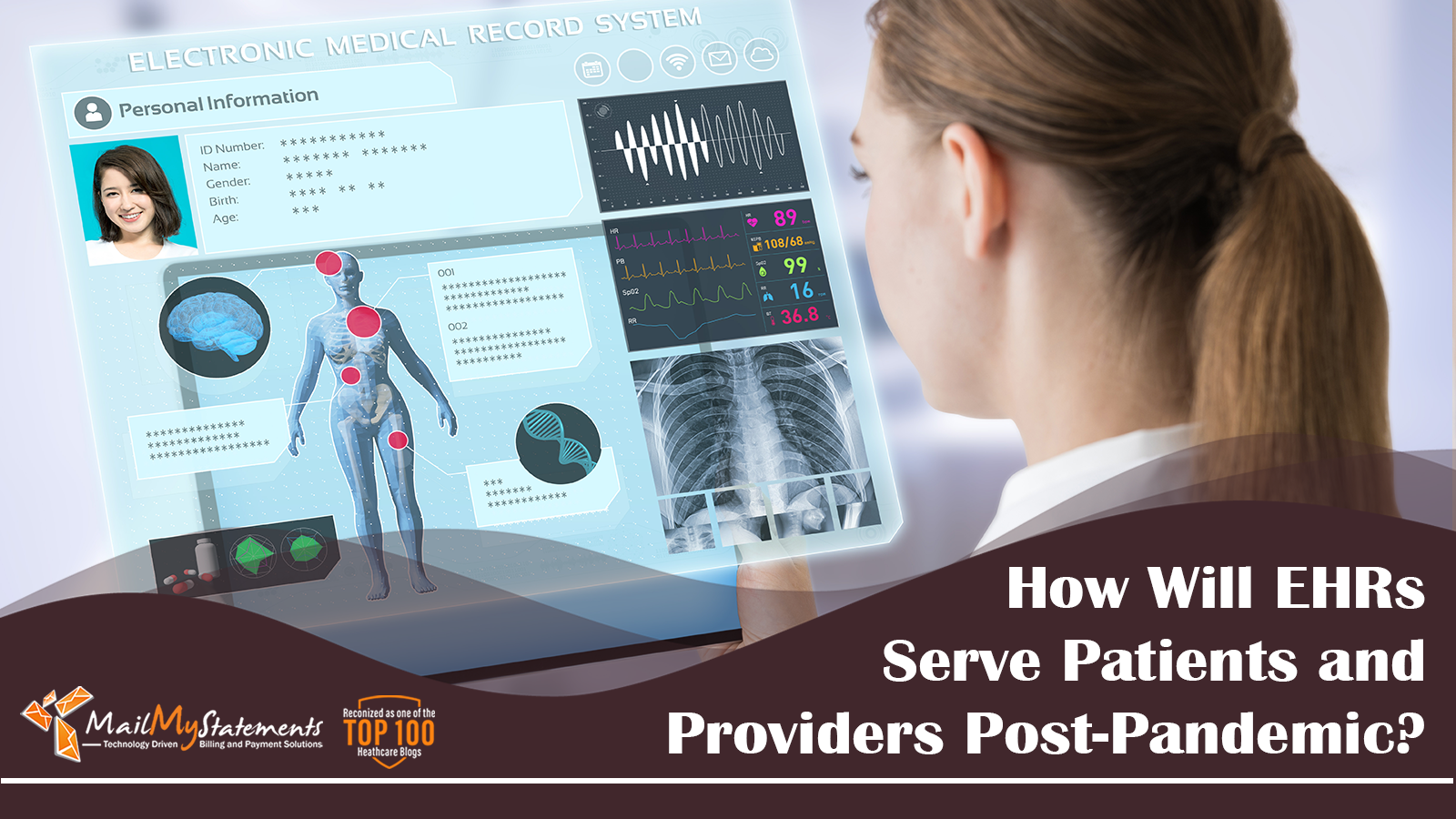How Will EHRs Serve Patients and Providers Post-Pandemic?

The usefulness of electronic health records (EHRs) has been a topic of contention in the healthcare industry for several years. However, recent research supports the benefit of EHR use for patients and practices alike, particularly as scientists review the reliance on these systems during the COVID-19 pandemic. Exploring the past, present, and future of EHRs can support practices in strategic adoption and implementation.
Common Provider Issues with EHRs
Most EHR complaints from practices and providers center on the expense of implementing a new system and the time required to train staff and physicians. Many practices invested in older EHRs that no longer support their needs and may try to recoup costs by retrofitting outdated tech with limited success.
Some practices cite security concerns, such as the burden of maintaining electronic records that comply with the privacy regulations of the Health Insurance Portability and Accountability Act (HIPAA). However, most modern EHRs use cloud-based technology and secure firewalls that prevent unauthorized access.
In November 2020, the Journal of the American Medical Association surveyed providers about challenges they faced when rapidly scaling EHR use during COVID-19. Many of the 15 academic medical centers that participated in the study cited a lack of financial support from federal, state, and local municipal agencies, as well as the limitations of creating a cohesive system across providers.
Despite these challenges, Health Leaders reported in July 2020 that COVID-19 accelerated EHR adoption and upgrades across the industry.
EHR Prevalence in the Pandemic

In June 2020, the Centers for Disease Control and Prevention reported on the essential use of EHR as a telehealth tool during the COVID-19 pandemic. As defined by the agency, telehealth encompasses direct, real-time communication between a patient and provider through phone, email, or video chat, as well as so-called asynchronous contact. This term refers to common EHR functionality that supports the secure transmission of data, images, messages, and other key health information between patient and provider. Many EHR systems also provide remote patient monitoring recommended by the CDC to take clinical measurements such as heart rate and blood pressure when the patient remains at home to prevent COVID-19 exposure and transmission.
The CDC emphasized telehealth as a safer public health option as we continue to combat the coronavirus, alleviating the stress on in-person practice settings and reducing patient and provider risk of disease transmission. EHR use helps providers maintain continuity of care, preventing negative patient outcomes that can result from delayed diagnosis, treatment, or preventive care. These services are particularly valuable for individuals who face social or medical barriers to accessing traditional care, such as geography, limited economic resources, advanced age, or chronic physical or mental health issues.
Advantages of Implementation
According to HealthIT.gov, an initiative of the Office of the National Coordinator for Health Information Technology, benefits of EHR implementation include:
- Increased patient engagement in their health care with the ability to access records and communicate with providers right from their devices
- Improved patient experience and outcomes with reduced paperwork, integrated scheduling that reduces wait times, access to electronic prescriptions and referrals, and reliable health care reminders
- Provider access to resources, decision support tools, and clinical guides
- More comprehensive documentation to drive accurate billing and coding for faster reimbursement
- Enhanced risk management and liability prevention for providers
- Fewer medical errors with integrated safety checks when prescribing treatments
- Improved care coordination among primary and specialty providers, labs, pharmacies, and other stakeholders in patient care
- Streamlined patient care that creates cost and time efficiencies
- Financial incentives from Medicare and Medicaid for “meaningful use” of an EHR as well as the use of EHR records to qualify for value-based care incentives
A national survey of doctors revealed that providers largely tout the benefits of EHR technology. Three-fourths of the respondents said these systems enhance their ability to provide patient care, 84 percent reported clinical benefits for their practice, and 94 percent offer direct patient record access at each appointment.
The Future of EHR Use

The CDC advocates the ongoing use of EHR and other types of telehealth for diverse provider applications, such as:
- Screening and referring patients who need urgent but low-risk care
- Offering nutrition counseling, coaching, medication management, and other support services for patients facing chronic conditions such as diabetes or obesity as well as mental health conditions
- Providing online occupational and physical therapy sessions
- Managing care for patients with limited access to in-person medical services
- Monitoring blood glucose, blood pressure, and other diagnostics through remote assessment
- Engaging in follow-up care after surgical procedures and hospitalizations
- Assisting with concerns such as advance directives
- Connecting with other providers to coordinate patient care
The journal EHR Intelligence reports that post-pandemic, health information tech experts are exploring the application of EHR use during COVID-19 to care for patients with chronic health conditions. For example, the team at the Indiana Health Information Exchange, which connects data from health systems throughout the state, will focus on the development of machine learning and artificial intelligence for early disease diagnosis.
Large health systems have increasingly realized the need to standardize EHR use across multiple practices, providers, hospitals, and locations. Such projects will see a major revitalization in 2022 and beyond as systems shift resources from pandemic response to other initiatives.
Partnering with an experienced EHR provider can smooth the bumps associated with implementation, allowing practices to take advantage of features that improve patient care while reducing costs.
Final Thoughts
MailMyStatements is a technology-driven patient statement and payment vendor that offers managed billing needs from payment plan capabilities to statement design. Get in touch with us today to learn more about our various solutions to help increase patient collections.
![]()



